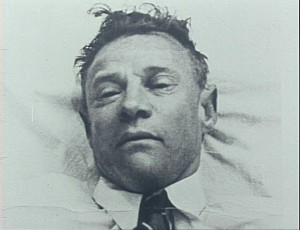
Mortuary photo of the unknown man found dead on Somerton Beach, south of Adelaide, Australia, in December 1948. Sixty-three years later, the man's identity remains a mystery, and it's still not clear how – or even if – he was murdered.
Posted on 08/14/2011 11:10:02 AM PDT by Palter
Most murders aren’t that difficult to solve. The husband did it. The wife did it. The boyfriend did it, or the ex-boyfriend did. The crimes fit a pattern, the motives are generally clear.
Of course, there are always a handful of cases that don’t fit the template, where the killer is a stranger or the reason for the killing is bizarre. It’s fair to say, however, that nowadays the authorities usually have something to go on. Thanks in part to advances such as DNA technology, the police are seldom baffled anymore.

Mortuary photo of the unknown man found dead on Somerton Beach, south of Adelaide, Australia, in December 1948. Sixty-three years later, the man's identity remains a mystery, and it's still not clear how – or even if – he was murdered.
They certainly were baffled, though, in Adelaide, the capital of South Australia, in December 1948. And the only thing that seems to have changed since then is that a story that began simply—with the discovery of a body on the beach on the first day of that southern summer—has bec0me ever more mysterious. In fact, this case (which remains, theoretically at least, an active investigation) is so opaque that we still do not know the victim’s identity, have no real idea what killed him and cannot even be certain whether his death was murder or suicide.
What we can say is that the clues in the Somerton Beach mystery (or the enigma of the “Unknown Man,” as it is known Down Under) add up to one of the world’s most perplexing cold cases. It may be the most mysterious of them all.
Let’s start by sketching out the little that is known for certain. At 7 o’clock on the warm evening of Tuesday, November 30, 1948, jeweler John Bain Lyons and his wife went for a stroll on Somerton Beach, a seaside resort a few miles south of Adelaide. As they walked toward Glenelg, they noticed a smartly dressed man lying on the sand, his head propped against a sea wall. He was lolling about 20 yards from them, legs outstretched, feet crossed. As the couple watched, the man extended his right arm upward, then let it fall back to the ground. Lyons thought he might be making a drunken attempt to smoke a cigarette.
Half an hour later, another couple noticed the same man lying in the same position. Looking on him from above, the woman could see that he was immaculately dressed in a suit, with smart new shoes polished to a mirror shine—odd clothing for the beach. He was motionless, his left arm splayed out on the sand. The couple decided that he was simply asleep, his face surrounded by mosquitoes. “He must be dead to the world not to notice them,” the boyfriend joked.
It was not until next morning that it became obvious that the man was actually dead. John Lyons returned from a morning swim to find some people clustered at the seawall where he had seen his “drunk” the previous evening. Walking over, he saw a figure slumped in much the same position, head resting on the seawall, feet crossed. Now, though, the body was cold. There were no marks of any sort of violence. A half-smoked cigarette was lying on the man’s collar, as though it had fallen from his mouth.
The body reached the Royal Adelaide Hospital three hours later. There Dr. John Barkley Bennett put the time of death at no earlier than 2 a.m., noted the likely cause of death as heart failure, and added that he suspected poisoning. The contents of the man’s pockets were spread out on a table: tickets from Adelaide to the beach, a pack of chewing gum, some matches, two combs and a pack of Army Club cigarettes containing seven cigarettes of another, more expensive brand called Kensitas. There was no wallet and no cash, and no ID. None of the man’s clothes bore any name tags—indeed, in all but one case the maker’s label had been carefully snipped away. One trouser pocket had been neatly repaired with an unusual variety of orange thread.
By the time a full autopsy was carried out a day later, the police had already exhausted their best leads as to the dead man’s identity, and the results of the postmortem did little to enlighten them. It revealed that the corpse’s pupils were “smaller” than normal and “unusual,” that a dribble of spittle had run down the side of the man’s mouth as he lay, and that “he was probably unable to swallow it.” His spleen, meanwhile, “was strikingly large and firm, about three times normal size,” and the liver was distended with congested blood.
In the man’s stomach, pathologist John Dwyer found the remains of his last meal—a pasty—and a further quantity of blood. That too suggested poisoning, though there was nothing to show that the poison had been in the food. Now the dead man’s peculiar behavior on the beach—slumping in a suit, raising and dropping his right arm—seemed less like drunkenness than a lethal dose of something taking slow effect. But repeated tests on both blood and organs by an expert chemist failed to reveal the faintest trace of a poison. “I was astounded that he found nothing,” Dwyer admitted at the inquest. In fact, no cause of death was found.
The body displayed other peculiarities. The dead man’s calf muscles were high and very well developed; although in his late 40s, he had the legs of an athlete. His toes, meanwhile, were oddly wedge-shaped. One expert who gave evidence at the inquest noted:
I have not seen the tendency of calf muscle so pronounced as in this case…. His feet were rather striking, suggesting—this is my own assumption—that he had been in the habit of wearing high-heeled and pointed shoes.
Perhaps, another expert witness hazarded, the dead man had been a ballet dancer?
The mystery gets stranger after the jump.
All this left the Adelaide coroner, Thomas Cleland, with a real puzzle on his hands. The only practical solution, he was informed by an eminent professor, Sir Cedric Stanton Hicks, was that a very rare poison had been used—one that “decomposed very early after death,” leaving no trace. The only poisons capable of this were so dangerous and deadly that Hicks would not say their names aloud in open court. Instead, he passed Cleland a scrap of paper on which he had written the names of two possible candidates: digitalis and strophanthin. Hicks suspected the latter. Strophanthin is a rare glycoside derived from the seeds of some African plants. Historically, it was used by a little-known Somali tribe to poison arrows.
More baffled than ever now, the police continued their investigation. A full set of fingerprints was taken and circulated throughout Australia—and then throughout the English-speaking world. No one could identify them. People from all over Adelaide were escorted to the mortuary in the hope they could give the corpse a name. Some thought they knew the man from photos published in the newspapers, others were the distraught relatives of missing persons. Not one recognized the body.
By January 11, the South Australia police had investigated and dismissed pretty much every lead they had. The investigation was now widened in an attempt to locate any abandoned personal possessions, perhaps left luggage, that might suggest that the dead man had come from out of state. This meant checking every hotel, dry cleaner, lost property office and railway station for miles around. But it did produce results. On the 12th, detectives sent to the main railway station in Adelaide were shown a brown suitcase that had been deposited in the cloakroom there on November 30.
The staff could remember nothing about the owner, and the case’s contents were not much more revealing. The case did contain a reel of orange thread identical to that used to repair the dead man’s trousers, but painstaking care had been applied to remove practically every trace of the owner’s identity. The case bore no stickers or markings, and a label had been torn off from one side. The tags were missing from all but three items of the clothing inside; these bore the name “Kean” or “T. Keane,” but it proved impossible to trace anyone of that name, and the police concluded–an Adelaide newspaper reported–that someone “had purposely left them on, knowing that the dead man’s name was not ‘Kean’ or ‘Keane.’ ”
The remainder of the contents were equally inscrutable. There was a stencil kit of the sort “used by the Third Officer on merchant ships responsible for the stenciling of cargo”; a table knife with the haft cut down; and a coat stitched using a feather stitch unknown in Australia. A tailor identified the stitchwork as American in origin, suggesting that the coat, and perhaps its wearer, had traveled during the war years. But searches of shipping and immigration records from across the country again produced no likely leads.
The police had brought in another expert, John Cleland, emeritus professor of pathology at the University of Adelaide, to re-examine the corpse and the dead man’s possessions. In April, four months after the discovery of the body, Cleland’s search produced a final piece of evidence—one that would prove to be the most baffling of all. Cleland discovered a small pocket sewn into the waistband of the dead man’s trousers. Previous examiners had missed it, and several accounts of the case have referred to it as a “secret pocket,” but it seems to have been intended to hold a fob watch. Inside, tightly rolled, was a minute scrap of paper, which, opened up, proved to contain two words, typeset in an elaborate printed script. The phrase read “Tamám Shud.”
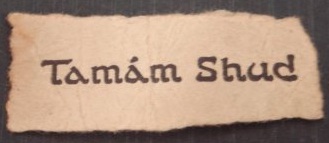
The scrap of paper discovered in a concealed pocket in the dead man's trousers. 'Tamám shud' is a Persian phrase; it means 'It is ended.' The words had been torn from a rare New Zealand edition of The Rubaiyat of Omar Khayyam.
Frank Kennedy, the police reporter for the Adelaide Advertiser, recognized the words as Persian, and telephoned the police to suggest they obtain a copy of a book of poetry—the Rubaiyat of Omar Khayyam. This work, written in the twelfth century, had become popular in Australia during the war years in a much-loved translation by Edward FitzGerald. It existed in numerous editions, but the usual intricate police enquiries to libraries, publishers and bookshops failed to find one that matched the fancy type. At least it was possible, however, to say that the words “Tamám shud” (or “Taman shud,” as several newspapers misprinted it—a mistake perpetuated ever since) did come from Khayyam’s romantic reflections on life and mortality. They were, in fact, the last words in most English translations— not surprisingly, because the phrase means “It is ended.”
Taken at face value, this new clue suggested that the death might be a case of suicide; in fact, the South Australia police never did turn their “missing person” enquiries into a full-blown murder investigation. But the discovery took them no closer to identifying the dead man, and in the meantime his body had begun to decompose. Arrangements were made for a burial, but—conscious that they were disposing of one of the few pieces of evidence they had—the police first had the corpse embalmed, and a cast taken of the head and upper torso. After that, the body was buried, sealed under concrete in a plot of dry ground specifically chosen in case it became necessary to exhume it. For some time, flowers would be found at odd intervals on the grave, but no one could ascertain who had left them there, or why.
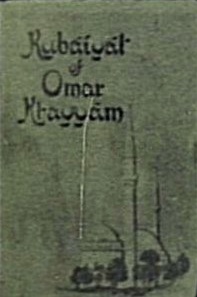
The dead man's copy of the Rubaiyat, from a contemporary press photo. No other copy of the book matching this one has ever been located.
In July, fully eight months after the investigation had begun, the search for the right copy of the Rubaiyat produced results. On the 23rd, a Glenelg businessman walked into the Detective Office in Adelaide with a copy of the book and a strange story. Early the previous December, just after the discovery of the unknown body, he had gone for a drive with his brother-in-law in a car he kept parked a few hundred yards from Somerton Beach. The brother-in-law had found a copy of the Rubaiyat lying on the floor by the rear seats. Each man had silently assumed it belonged to the other, and the book had sat in the glove compartment ever since. Alerted by a newspaper article about the search, the two men had gone back to take a closer look. They found that part of the final page had been torn out, together with Khayyam’s final words. They went to the police.
Detective Sergeant Lionel Leane took a close look at the book. Almost at once he found a telephone number penciled on the rear cover; using a magnifying glass, he dimly made out the faint impression of some other letters, written in capitals underneath. Here, at last, was a solid clue to go on.
The phone number proved to belong to a young nurse who lived near Somerton Beach. Like the Glenelg businessmen, she has never been publicly identified—the South Australia police of 1949 were disappointingly willing to protect witnesses embarrassed to be linked to the case—and she is now known only by her nickname, Jestyn. Reluctantly, it seemed (perhaps because she was living with the man who would become her husband), the nurse admitted that she had indeed presented a copy of the Rubaiyat to a man she had known during the war. She gave the detectives his name: Alfred Boxall.
At last the police felt confident that they had solved the mystery. Boxall, surely, was the Unknown Man. Within days they traced his home to Marouba, New South Wales.
The problem was that Boxall turned out to be still alive, and he still had the copy of the Rubaiyat Jestyn had given him. It bore the nurse’s inscription, but was completely intact. The scrap of paper hidden in the dead man’s pocket must have come from somewhere else.
It might have helped if the South Australia police had felt able to question Jestyn closely, but it is clear that they did not. The gentle probing that the nurse received did yield some intriguing bits of information; interviewed again, she recalled that some time the previous year—she could not be certain of the date—she had come home to be told by neighbors than an unknown man had called and asked for her. And, confronted with the cast of the dead man’s face, Jestyn seemed “completely taken aback, to the point of giving the appearance she was about to faint,” Leane said. She seemed to recognize the man, yet firmly denied that he was anyone she knew.
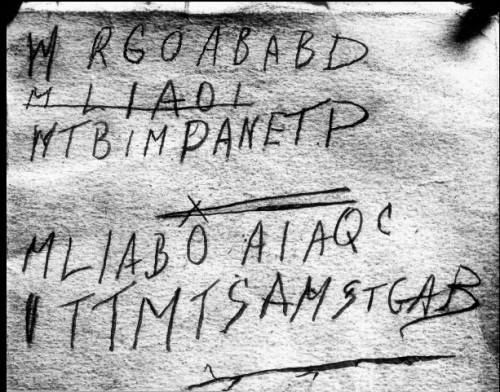
The code revealed by examination of the dead man's Rubaiyat under ultraviolet light. (Click to see it at a larger size.) It has yet to be cracked.
That left the faint impression Sergeant Leane had noticed in the Glenelg Rubaiyat. Examined under ultraviolet light, five lines of jumbled letters could be seen, the second of which had been crossed out. The first three were separated from the last two by a pair of straight lines with an ‘x’ written over them. It seemed that they were some sort of code.
Breaking a code from only a small fragment of text is exceedingly difficult, but the police did their best. They sent the message to Naval Intelligence, home to the finest cipher experts in Australia, and allowed the message to be published in the press. This produced a frenzy of amateur codebreaking, almost all of it worthless, and a message from the Navy concluding that the code appeared unbreakable:
From the manner in which the lines have been represented as being set out in the original, it is evident that the end of each line indicates a break in sense.
There is an insufficient number of letters for definite conclusions to be based on analysis, but the indications together with the acceptance of the above breaks in sense indicate, in so far as can be seen, that the letters do not constitute any kind of simple cipher or code.
The frequency of the occurrence of letters, whilst inconclusive, corresponds more favourably with the table of frequencies of initial letters of words in English than with any other table; accordingly a reasonable explanation would be that the lines are the initial letters of words of a verse of poetry or such like.
And there, to all intents and purposes, the mystery rested. The Australian police never cracked the code or identified the unknown man. Jestyn died a few years ago without revealing why she had seemed likely to faint when confronted with a likeness of the dead man’s face. And when the South Australia coroner published the final results of his investigation in 1958, his report concluded with the admission:
I am unable to say who the deceased was… I am unable to say how he died or what was the cause of death.
In recent years, though, the Tamám Shud case has begun to attract new attention. Amateur sleuths have probed at the loose ends left by the police, solving one or two minor mysteries but often creating new ones in their stead. And two especially persistent investigators—retired Australian policeman Gerry Feltus, author of the only book yet published on the case, and Professor Derek Abbott of the University of Adelaide—have made particularly useful progress. Both freely admit they have not solved mystery—but let’s close by looking briefly at the remaining puzzles and leading theories.
First, the man’s identity remains unknown. It is generally presumed that he was known to Jestyn, and may well have been the man who called at her apartment, but even if he was not, the nurse’s shocked response when confronted with the body cast was telling. Might the solution be found in her activities during World War II? Was she in the habit of presenting men friends with copies of the Rubaiyat, and, if so, might the dead man have been a former boyfriend, or more, whom she did not wish to confess to knowing? Abbott’s researches certainly suggest as much, for he has traced Jestyn’s identity and discovered that she had a son. Minute analysis of the surviving photos of the Unknown Man and Jestyn’s child reveals intriguing similarities. Might the dead man have been the father of the son? If so, could he have killed himself when told he could not see them?
Those who argue against this theory point to the cause of the man’s death. How credible is it, they say, that someone would kill himself simply because the woman he had gone to see was not at home? And how likely is it that he would do so by dosing himself with a poison of real rarity? Digitalis, and even stropanthin, can be had from pharmacies, but never off the shelf—both poisons are muscle relaxants used to treat heart disease. The apparently exotic nature of the death suggests, to these theorists, that the Unknown Man was possibly a spy. He died, after all, at the onset of the Cold War, and at a time when the British rocket testing facility at Woomera, a few hundred miles from Adelaide, was one of the most secret bases in the world. It has even been suggested that poison was administered to him via his tobacco. Might this explain the mystery of why his Army Club pack contained seven Kensitas cigarettes?
Far-fetched as this seems, there are two more genuinely odd things about the mystery of Tamám Shud that point away from anything so mundane as suicide.
The first is the apparent impossibility of locating an exact duplicate of the Rubaiyat handed in to the police in July 1949. Exhaustive enquiries by Gerry Feltus at last tracked down a near-identical version, with the same cover, published by a New Zealand bookstore chain named Whitcombe & Tombs. But it was published in a squarer format.
Add to that one of Derek Abbott’s leads, and the puzzle gets yet more peculiar. Abbott has discovered that at least one other man died in Australia after the war with a copy of Khayyam’s poems close by him. This man’s name was George Marshall, he was a Jewish immigrant, and his copy of the Rubaiyat was published in London by Methuen— a seventh edition.
So far, so not especially peculiar. But inquiries to the publisher, and to libraries around the world, suggest that there were never more than five editions of Methuen’s Rubaiyat—which means that Marshall’s seventh edition was as nonexistent as the Unknown Man’s Whitcombe & Tombs appears to be. Might the books not have been books at all, but disguised spy gear of some sort—say one-time code pads?
Which brings us to the final mystery. Going through the police file on the case, Gerry Feltus stumbled across a neglected piece of evidence: a statement, given in 1959, by a man who had been on Somerton Beach. There, on the evening that the Unknown Man expired, and walking toward the spot where his body was found, the witness (a police report stated) “saw a man carrying another on his shoulder, near the water’s edge. He could not describe the man.”
At the time, this did not seem that mysterious; the witness assumed he’d seen somebody carrying a drunken friend. Looked at in the cold light of day, though, it raises questions. After all, none of the people who saw a man lying on the seafront earlier had noticed his face. Might he not have been the Unknown Man at all? Might the body found next morning have been the one seen on the stranger’s shoulder? And, if so, might this conceivably suggest this really was a case involving spies—and murder?
Sources
‘Body found on Somerton Beach.’ The Advertiser (Adelaide, SA), December 2, 1948; ‘Somerton beach body mystery.’ The Advertiser, December 4, 1948; ‘Unknown buried.’ Brisbane Courier-Mail, June 15, 1949; GM Feltus. The Unknown Man: A Suspicious Death at Somerton Beach. Privately published: Greenacres, South Australia, 2010; Dorothy Pyatt. “The Somerton Beach body mystery.” South Australia Police Historical Society Hue & Cry, October 2007; Derek Abbott et al. World search for a rare copy of the Rubaiyat of Omar Khayyam. Accessed July 4, 2011.
Palter hasn’t posted since 9/22/2011.................
https://www.freerepublic.com/tag/by:palter/index?brevity=full;tab=comments
Chicago has a 14% homicide clearance rate.
Yes, you read that right. 86% of homicides (not murders, homicides which includes police shootings and self defense shootings) in Chicago remain unresolved.
Solving the Somerton Man mystery, Australia’s most baffling cold case
Forensic advances are poised to answer questions that have gripped Down Under for 70 years.
by Jackson Ryan
July 31, 2018
https://www.cnet.com/news/solving-the-somerton-man-mystery-australias-most-baffling-cold-case/
Wha…? Whoooo??? O my golly!
OK. I’m ready for the real ending! Wha’ happen?
IIRC, “Tamám Shud” was reported as “Tamam Shood” ‘the very end’ in America when this first transpired.
I think the writer was going for some dramatic flair. That was what jumped out at me too - “Most murders are solved? I don’t think so.”
I think he was a spy as well. The fancy cigarettes in the cheep brand’s package may have been to ward off punks that might try to rob him? And of course he wasn’t worried about his wallet - but all of the other information. Or himself - being able to continue his work.
Hmm. If he was killed by poison that would seem the killers wanted things hidden. If so - instead of carrying him and setting him on the beach - why not carry him to a boat and dump him at sea?
Perhaps he wasn’t a spy - but was just some poor guy made up to look like the spy - and they played a double-cross on whoever ordered the hit? (”Yeah, I spiked his meal - and followed him as he was walking along the beach. After a few blocks he sat down next to the wall. Some folks walked by but ignored him. I waited until morning - he wasn’t moving. It was in all the papers. Now where’s the other half of the money?”)
So that means - the real spy ..... is still out there. Somewhere.
(Well - I guess he would be 100+ years old now in the nursing home.)
Yeah, Palter got him- or herself banned quite a while back, not sure why (maybe a 9/11 truther?), but used to post a lot of stuff I could use for GGG.
He was probably a black market car seller, and died of "positional asphyxia" when he passed out a little drunk.
As Red Badger pointed out, Palter’s been gone since 2011.
The name “Keane” or “Kean” was found on three items in the suitcase. Appears that the man’s name was Thomas Keane.
http://ciphermysteries.com/2013/10/01/new-somerton-man-identification-claim
I like the show “The Blacklist”. One of the characters (with a mysterious, unknown background) is named Tom Keen. I wonder if that name was picked up from this story?
This Australian story would make for a good two-part episode on “The Blacklist”.
Well, that doesn’t sound like much of an ending but since he’s not talking to tell us the rest of the story, it will have to do!
;o]
‘Face
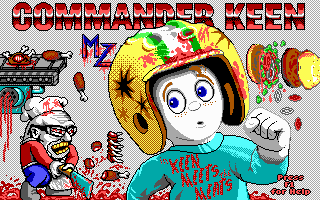

Post #32......................
Disclaimer: Opinions posted on Free Republic are those of the individual posters and do not necessarily represent the opinion of Free Republic or its management. All materials posted herein are protected by copyright law and the exemption for fair use of copyrighted works.